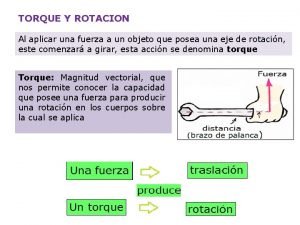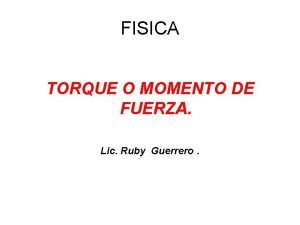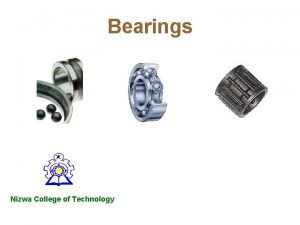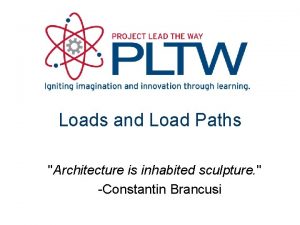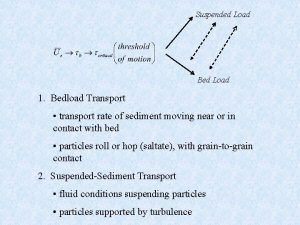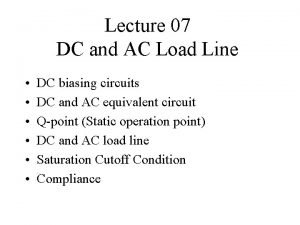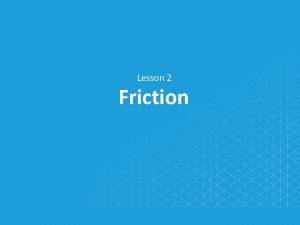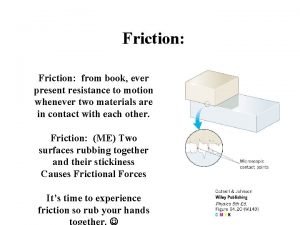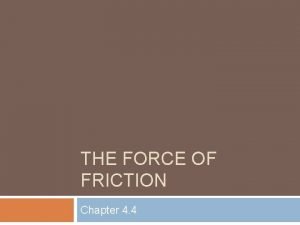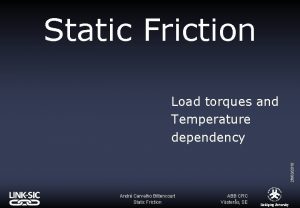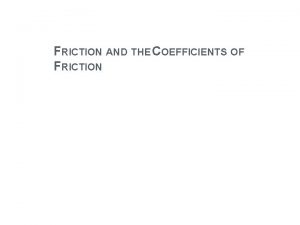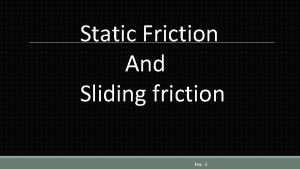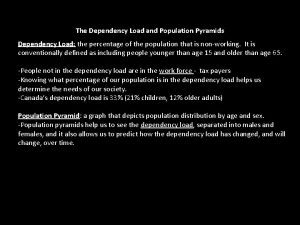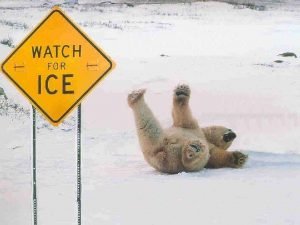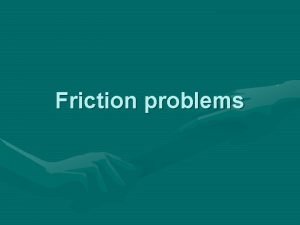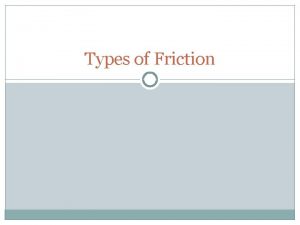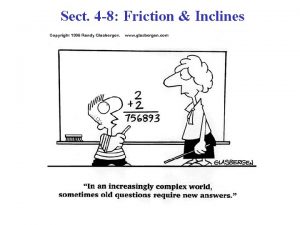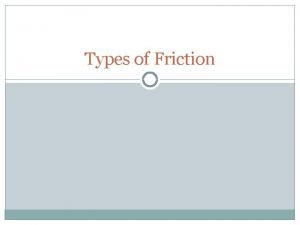Static Friction 26032010 Load torques and Temperature dependency






![Perpendicular load torque § Tp range [0. 04, 0, 10] Small variations possible Effects Perpendicular load torque § Tp range [0. 04, 0, 10] Small variations possible Effects](https://slidetodoc.com/presentation_image_h2/8efa03bb9512fda4ef5d848d094d0897/image-7.jpg)
![Manipulated Load Torque § § 50 static curves Tm range [-0. 7, 0, 4] Manipulated Load Torque § § 50 static curves Tm range [-0. 7, 0, 4]](https://slidetodoc.com/presentation_image_h2/8efa03bb9512fda4ef5d848d094d0897/image-8.jpg)




- Slides: 12

Static Friction 26/03/2010 Load torques and Temperature dependency André Carvalho Bittencourt Static Friction ABB CRC Västerås, SE

Motivation § What is the most common researched phenomenon in robotics? § Why? André Carvalho Bittencourt Static Friction ABB CRC Västerås, SE

Motivation - Diagnosis § Robots eventually break down Increase of wear debris à Increase of friction § However! - Many other things affect friction Temperature Load Position Velocity/acceleration Lubricant, etc André Carvalho Bittencourt Static Friction ABB CRC Västerås, SE

Objectives § How does friction changes with § Position Load torques • Manipulated • Perpendicular Temperature Scope IRB 6620 Joint 2 André Carvalho Bittencourt Static Friction ABB CRC Västerås, SE

Friction Curve Estimation § In steady-state one joint at a time § Average fwd and bwd movements § and use it as an estimate of the direction independent friction André Carvalho Bittencourt Static Friction ABB CRC Västerås, SE

Joint angles § § 50 static curves Angles range 8. 5 to 60º Effects § Not significant § M 0 should do it André Carvalho Bittencourt Static Friction ABB CRC Västerås, SE
![Perpendicular load torque Tp range 0 04 0 10 Small variations possible Effects Perpendicular load torque § Tp range [0. 04, 0, 10] Small variations possible Effects](https://slidetodoc.com/presentation_image_h2/8efa03bb9512fda4ef5d848d094d0897/image-7.jpg)
Perpendicular load torque § Tp range [0. 04, 0, 10] Small variations possible Effects § Not significant § At joint 1, small increase in Fs § For joint 2, M 0 is enough André Carvalho Bittencourt Static Friction ABB CRC Västerås, SE
![Manipulated Load Torque 50 static curves Tm range 0 7 0 4 Manipulated Load Torque § § 50 static curves Tm range [-0. 7, 0, 4]](https://slidetodoc.com/presentation_image_h2/8efa03bb9512fda4ef5d848d094d0897/image-8.jpg)
Manipulated Load Torque § § 50 static curves Tm range [-0. 7, 0, 4] Effects § (linear) Fc increase § (linear) Fs increase § cte vs § Proposed model, M 0 +2 terms André Carvalho Bittencourt Static Friction ABB CRC Västerås, SE

Temperature § § 50 static curves (min/max) T range 34 -80ºC Effects § (linear) Fs increase § (linear) vs increase § (exp-like) Fv increase § Load torque co-effects Subtract surfaces Subtract identified gravity terms from surfaces Independent! André Carvalho Bittencourt Static Friction ABB CRC Västerås, SE

Proposed Model § § § M 0 + 4 terms 7 terms (5 vel-weak, 2 vel-str) Total of 11 parameters § § Tm (3): (linear) increase of Fc and Fs T (4): André Carvalho Bittencourt Static Friction (linear) increase of Fs and vs (exp) increase of Fv ABB CRC Västerås, SE

Validation § Parameters identified with previous data § Error reduced by a factor of 6 M 0: mean=0. 027, max=0. 071 M*: mean=0. 004, max=0. 018 André Carvalho Bittencourt Static Friction ABB CRC Västerås, SE

Summary & Conclusions § § § Empirically motivated model to describe T and Tm So far, 1 joint! Tp might also affect Tm affects vel-weak only (inc) T affects vel-weak (dec) and vel-str (nonlinear inc) 11 parameters (4 nlin: 3 vs, TVo) Id requires excitation over large range of T and Tm Can T-params be directly related to lubricant props? No T meas and Tm estimated* Right now, more useful for design/evaluation Can the model simply be plugged into a dynamic model (Lu. Gre)? André Carvalho Bittencourt Static Friction ABB CRC Västerås, SE
 Signos del torque
Signos del torque Caracteristicas del torque
Caracteristicas del torque Low and high friction
Low and high friction Taper roller bearing advantages and disadvantages
Taper roller bearing advantages and disadvantages Load paths
Load paths Pux
Pux Dc load line circuit
Dc load line circuit Static friction
Static friction Everpresent newton
Everpresent newton Friction force units
Friction force units Difference between curie temperature and neel temperature
Difference between curie temperature and neel temperature Difference between curie temperature and neel temperature
Difference between curie temperature and neel temperature Difference between antiferromagnetism and ferrimagnetism
Difference between antiferromagnetism and ferrimagnetism
